Understanding High-Quality Moldavite: Origins and Value
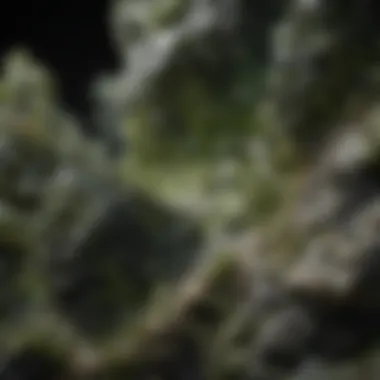
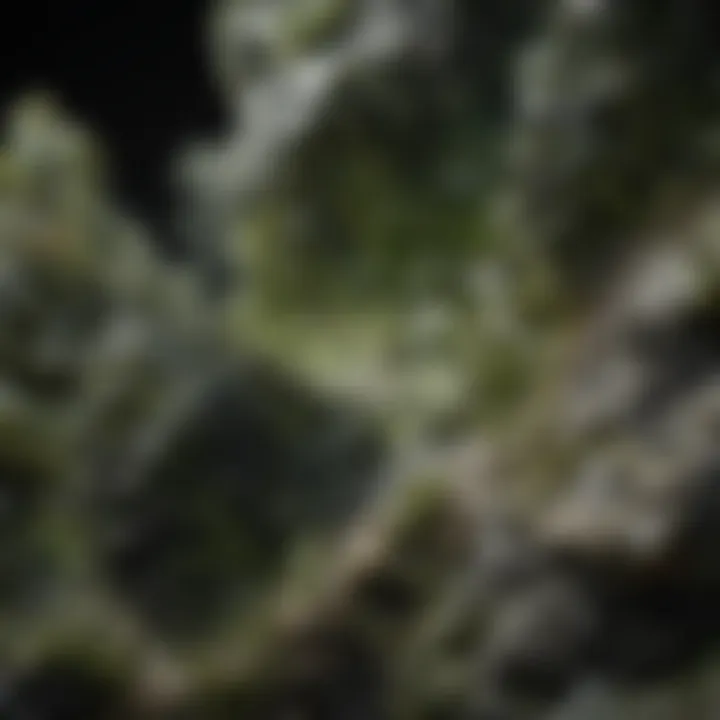
Intro
Moldavite, a fascinating gem that has captured the hearts of collectors and enthusiasts alike, isn't your average piece of glass. It formed as a result of a meteorite colliding with the Earth, specifically the region of the Czech Republic. This unique origin story grants moldavite not only its striking green color but also its array of metaphysical properties that many swear by.
For those who dive into the world of geology and aesthetics, high-quality moldavite offers a canvas of complexities that goes beyond its visual appeal. Delving into its various attributes, from texture to color saturation, can tell a seasoned collector if they are dealing with a genuine specimen or a cleverly crafted imitation. We'll explore how to distinguish authentic pieces, the historical significance that molds its allure, and why it deserves a spot in any serious collection of geological wonders.
More than just a pretty face, moldavite intertwines science and spirituality, inviting individuals to not just gaze upon its beauty but to connect with its ancient origins. This article seeks to equip you with knowledge about high-quality moldavite, enlighten you on collecting strategies, and deepen your appreciation for this extraordinary natural phenomenon.
Featured Collectible of the Month
Overview
In the ever-evolving realm of rock and fossil collecting, moldavite stands tall among its peers. Variations in size, clarity, and texture contribute to its wide range of market values. High-quality pieces are characterized by vibrant colors, unblemished surfaces, and often, intricate natural formations that reflect its tumultuous history. Whether you’re new to the collecting scene or an experienced expert, understanding these elements can help you navigate your next acquisition.
Historical Significance
Moldavite has a rich story that dates back to the impact that created the Ries crater about 15 million years ago. The force of this collision generated extreme temperatures, which melted surrounding material, ultimately giving rise to the moldavite glass we cherish today. Its historical importance also extends to ancient cultures, where it was believed to hold divine properties and was often used in amulets and ceremonial artifacts. In fact, the locals in the region have long viewed moldavite as a stone of transformation.
"To hold a piece of moldavite is to hold a piece of celestial history."
Understanding the historical context enhances our appreciation for this gem, granting us insight into why moldavite has been celebrated across ages and civilizations. As we transition to identifying this coveted collectible, one’s awareness of its journey can underlie the significance of each unique specimen.
Identification Techniques
Visual Characteristics
When it comes to identifying high-quality moldavite, a few key visual cues should guide you:
- Color: Authentic moldavite showcases an olive to deep forest green hue, often with translucent qualities.
- Surface Texture: Look for natural pitting and varying textures on the surface. High-quality pieces may have distinct features like seams or ridges exuding its natural essence.
- Clarity: While a cloudiness might indicate lower-quality glass, fine specimens exhibit clarity and brilliance that draw the eye in.
Resources for Identification
Understanding moldavite requires diligent research and access to reliable resources. Here are some avenues worth exploring:
- Wikipedia: Offers foundational knowledge about moldavite and its properties. Wikipedia Moldavite
- Britannica: Delves deeper into the geological significance of moldavite. Britannica Moldavite
- Reddit: A community-driven platform where collectors share experiences and insights on identifying genuine moldavite. Reddit Moldavite
- Facebook Groups: Joining dedicated moldavite collector groups can enhance your understanding of its identification as well as buying and selling trends.
Understanding Moldavite
Moldavite is not just any mineral; it's like a tale woven through the cosmos, capturing the imagination of geologists and collectors alike. This section lays the groundwork for understanding why moldavite is so cherished. It dives into its very definition, significance, and formation processes. Grasping these elements helps pour clarity on moldavite's unique position in the realm of natural wonders.
Definition and Significance
Moldavite is a naturally occurring glass that hails from a meteorite impact event that took place around 15 million years ago in present-day Czech Republic. Its standout feature is its deep green color, which can range from almost transparent to an opaque olive. This range offers a mesmerizing look that makes each piece unique. Specifically, it’s formed from the intense heat and pressure created when the meteorite collided with Earth.
But what makes moldavite truly significant? For geological enthusiasts, it serves as a timeless link between extraterrestrial events and earthly materials. Imagine holding a piece of history that’s said to have traveled through space for eons before touching our planet. It's akin to gazing into the cosmos while holding a fragment of it in your palm. Collectors prize moldavite not only for its beauty but also for its rarity; very few truly high-quality pieces surface, causing demand to soar over the years.
Formation Process
The formation process of moldavite is a spectacle of nature’s power. Born from chaos, moldavite is the product of a cosmic phenomenon. When the meteor struck the Earth, its immense kinetic energy vaporized the surrounding silica-rich rocks, mixing them with molten material. The heat generated was intense, causing a fusion of minerals that would eventually cool and form moldavite. The result is not just a geological specimen but a glassy teardrop filled with history and energy.
The molten nature of its origin gives moldavite its characteristic shapes, often found as thin, irregular pieces reminiscent of a delicate, wild sculpture. This fascinating formation process contributes not only to its physical attributes but seals its allure in metaphysical practices as well, where enthusiasts believe that these unique characteristics imbue the stone with special energies.
In summary, understanding moldavite's definition and formation equips collectors with essential knowledge, allowing them to appreciate not just the beauty but the story encapsulated within each piece. Knowledge like this sets the stage for a deeper dive into its physical characteristics, geological context, and beyond, making the journey of understanding moldavite all the more enriching.
Physical Characteristics of High-Quality Moldavite
High-quality moldavite stands out not just for its intriguing origins but also for its distinct physical characteristics. Understanding these traits is vital for collectors, as they play a central role in determining the stone's desirability and value. The allure of moldavite lies in its unique features—color, texture, clarity, and distinctive traits—that can often tell a story about the specific piece in question. By examining these aspects, collectors can make informed decisions about their purchases and foster a deeper appreciation for this remarkable material.
Color Variations
Moldavite is renowned for its striking color variations, commonly ranging from deep forest green to a lighter, almost translucent green. The depth of color can be influenced by different factors.
- Origin of Formation: The color of moldavite can often reveal clues about its formation process. For instance, darker pieces are generally older or found deeper within the earth.
- Impurities: Sometimes, trace elements during its formation can lead to slight tonal variations. A rare find, yellowish or brownish moldavite, fetches higher prices, yet it remains elusive for most collectors.
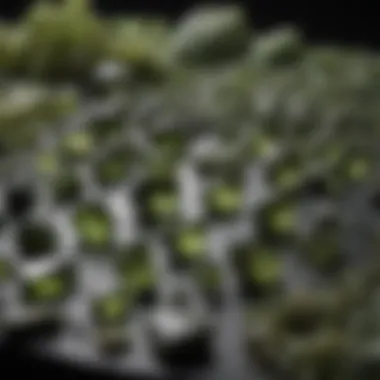

Collectors should remember that a vibrant color often garners interest, but other elements like clarity and texture also weigh heavily into the quality assessment. The way light interacts with moldavite can enhance these colors, making the stone almost shimmering under the right conditions.
Texture and Clarity
The texture and clarity of moldavite are equally pivotal in determining its worth. High-quality pieces often exhibit a glassy or smooth texture with minimal surface imperfections. However, some collectors might appreciate pieces with a rugged texture, as these can add character.
- Clarity Levels: Moldavite can range from completely transparent to utterly opaque. Clear pieces can show inclusions, which—while may be perceived as defects—add a level of uniqueness to the moldavite.
- Surface Features: A well-preserved moldavite can display intriguing surface features created by gas bubbles and flows during its formation. These textures range from rough to smooth, and each piece tells its own tale through these designs.
The appreciation of texture and clarity in moldavite goes beyond aesthetics; it establishes a connection between the collector and the geological history of the stone.
Distinctive Features
Certain markings and patterns can make moldavite particularly captivating and collectible. High-quality moldavite tends to have telltale signs indicating its authenticity and origin, such as:
- French Drops: Characterized by elongated teardrop shapes, these indicate a higher value due to their rarity.
- Unique Air Bubbles: Trapped air bubbles within the stone can point towards a natural formation, making them attractive to collectors.
- Flow Patterns: The visible lines or flows in moldavite can hint at its unique formation and add visual complexity.
Perhaps most fascinating is the way these distinctive features can lead to anecdotes about their individual journeys, capturing the imaginations of those who appreciate the beauty of natural history. Collectors often find that the stories behind the shapes enhance their connection to what might otherwise just be another piece of glass.
"Moldavite is not merely a collectible item; it's a window into the universe's past, holding tales of cosmic events that shaped our planet."
Understanding the physical characteristics of high-quality moldavite is crucial, as they contribute not only to its market value but also to the emotional and historical connection a collector can foster with their pieces.
Geological Context of Moldavite
Understanding the geological context of moldavite is key for anyone interested in this unique natural glass. Moldavite didn’t just appear out of nowhere; its origins are intricately linked to a historical event that reshaped part of our planet. Knowing about this context helps us appreciate moldavite not only as a collectible but also as a significant geological phenomenon.
Moldavite acts as a bridge between the cosmos and our local environment. When discussing its geological background, it’s essential to highlight two critical aspects: the impact event that created it and its geographical distribution. Both provide insights into its formation and allure.
The Moldavite Impact Event
Moldavite's creation can be traced back to a cataclysmic meteorite impact. Approximately 15 million years ago, a massive meteor struck what is now known as the Nördlinger Ries crater in Germany. This collision sent shockwaves through the earth, generating intense heat and pressure that transformed local materials, leading to the formation of moldavite. Not just a pretty piece of glass, moldavite represents a moment of great cosmic drama.
As the debris scattered from the impact site, glassy fragments made their way across large areas. What you see as moldavite today is the result of this extraordinary mingling of earthly materials and extraterrestrial force. It’s a tangible reminder of our planet’s history—much like a snapshot of a dance between the celestial and the terrestrial.
"Moldavite is not merely a stone; it tells a story of celestial encounters and earthly transformations."
Geographical Distribution
When it comes to geographical distribution, moldavite is primarily found in just a few select regions. The most noted locale is the Czech Republic, specifically the regions along the Vltava River. This area is often known as the "Moldau" region, named after the river itself. Here, you can find various deposits ranging from small chips to larger, more desirable pieces. In this context, understanding where to look is half the battle for collectors.
Besides the Czech Republic, very little moldavite has been documented elsewhere, which is purple gold for collectors. Its scarcity is one of the key factors that influence its value. As the word spreads about this unique geological gem, collectors are grappling with the challenge of finding authentic pieces.
Also worth noting: Some collectors have ventured into regions like Germany and Austria looking for stray deposits. However, the quality and authenticity still merit scrutiny, as not all pieces hail from the prestigious Czech origin.
In summary, the geological context of moldavite isn’t just a backdrop to its beauty; it enriches the understanding of why this gemstone is so prized among collectors. Recognizing its origin and the events that shaped it enhances appreciation and value, making it more than just a shiny object but a vital element of natural history.
Evaluating Moldavite Quality
Evaluating the quality of moldavite is an essential preoccupation for collectors and enthusiasts alike. Understanding what defines high-quality moldavite can significantly influence purchasing decisions and ultimately enhance one’s collection. Far from being just a hunt for gemstones, this process covers various aspects of the stone. Factors like aesthetic appeal, geological integrity, and authenticity all come into play when determining the value of this fascinating glass. Today, moldavite is not just a relic of an ancient impact; it has become a sought-after collectible, demanding careful examination before committing any financial resources.
Criteria for High-Quality Moldavite
When it comes to selecting high-quality moldavite, there are several key characteristics to consider. Here are the primary criteria:
- Color: The more vibrant the green hue, the better. High-quality moldavite often flaunts a rich green color, sometimes tinged with earthy brown or less common olive shades.
- Clarity: Look for transparency without visible inclusions. Flawless pieces are rare and thus command a higher price.
- Texture: Surface finish is important. A quality moldavite should display a distinctive texture, like a thumbprint or a wavy pattern, resulting from its unique formation process.
- Size and Shape: While size isn’t everything, larger pieces are indeed rarer. Moreover, natural shapes are preferred over heavily polished or carved forms, as they reflect authenticity.
Remember, these criteria serve as a starting point. The true quality emerges when all characteristics harmonize to present a piece that captivates the eye and ignites curiosity.
Common Impurities to Watch For
While the allure of moldavite can make even the sharpest collector overlook key details, knowing what impurities to look out for can save one from costly mistakes. Here are some common pitfalls:
- Bubbles: Visible air bubbles, often mistaken for natural features, can indicate an artificial origin or poor quality. Quality moldavite should have minimal or no bubbles.
- Pit or Scratch Marks: Surface imperfections can lower the value significantly. Check for smooth edges and a well-finished surface.
- Unnatural Colors: Be wary of pieces that exhibit odd hues, which could indicate treatment or enhancement. Authentic moldavite usually has a limited color palette.
- Misleading Labels: Some retailers might mislabel their offerings. Always double-check claims about the origin and quality of the moldavite.
By keeping a keen eye out for these common impurities, collectors can safeguard their investments and enhance the integrity of their collections.
"The most valuable pieces are those that speak to the soul and spark the imagination."
Overall, a finger on the pulse of quality standards ensures that collectors can enjoy not just the beauty of moldavite but also the rich stories each piece tells.

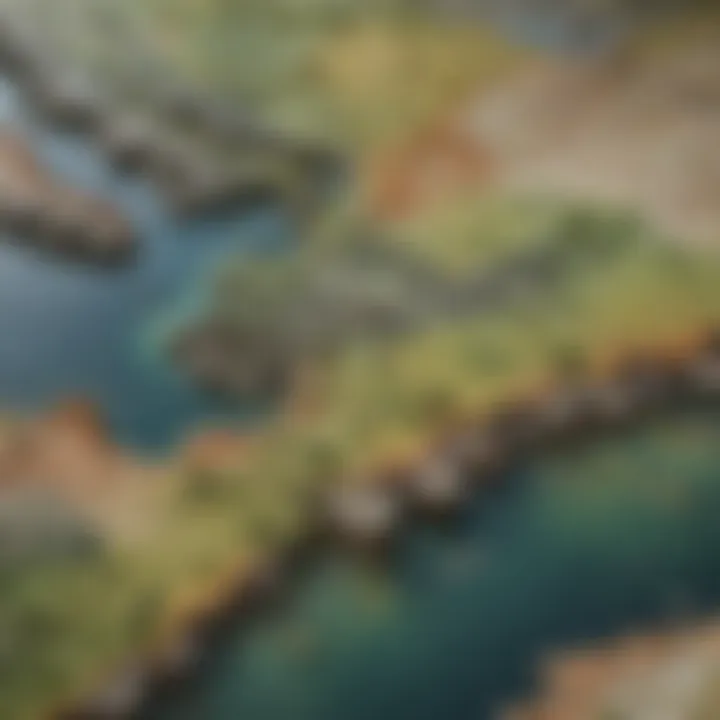
Collecting Moldavite
The allure of collecting moldavite extends far beyond its physical beauty; it's like holding a piece of the cosmos in your hand. This natural glass, born from a celestial event, has captured the interest of many enthusiasts and collectors. Understanding the nuances of collecting moldavite not only enhances appreciation but also solidifies a collector's place in a community passionate about geology and unique natural specimens.
Each piece of moldavite tells a story, stemming from the impact that formed it. Collectors often seek high-quality specimens, and knowing where to find them is a crucial aspect of any reliable collection. More than just an aesthetic pursuit, collecting moldavite entails a sense of responsibility that incorporates ethical considerations, sustainability, and informed decision-making about purchases and sources.
Ethical Sourcing Practices
When diving into the world of moldavite collecting, ethical sourcing should never be on the sidelines. One of the primary reasons for this concern is the environment. Moldavite is primarily mined in the Czech Republic, and unregulated mining practices can lead to significant ecological damage. Collectors should seek out transparent suppliers who prioritize sustainable practices.
- Research Suppliers: Before buying, make sure to check the reputation of the seller. Look for suppliers who are open about their sourcing methods.
- Engagement with Local Communities: Companies that engage with local communities and provide fair compensation demonstrate a commitment to ethical practices.
- Look for Certifications: While not always available, certifications indicating ethical sourcing can bolster confidence in the integrity of the product you’re purchasing.
Adhering to ethical sourcing guidelines not only ensures a responsible purchase but also helps promote the wellbeing of the ecosystems and communities involved in moldavite extraction.
Strategies for Building a Collection
Building a successful moldavite collection is much like assembling a jigsaw puzzle; each piece has its place and value. Whether you're a seasoned collector or just starting out, there are several strategies that can help optimize your collection.
- Set Your Budget: Especially with high-quality moldavite, prices can swing widely. Having a clear budget can shape your collecting journey, pushing you to seek out reliable and reasonably priced sources.
- Network with Other Collectors: Joining moldavite or mineral enthusiast groups, whether online on platforms like forums on Reddit or community pages on Facebook, can be invaluable. Other collectors can point you toward trusted sellers or upcoming events and auctions.
- Participate in Trade Shows: Attending gem and mineral shows presents an opportunity to not just buy but also engage in trading, which can be a great way to acquire unique pieces while letting go of duplicates or specimens that don’t quite fit your vision.
- Document Your Collection: Keeping a log of your purchases, including where and how they were sourced, helps track the provenance of your specimens. This can be beneficial if you decide to sell or trade in the future. Your collection’s history adds immense value.
Building a moldavite collection is an enriching endeavor, connecting you with the earth's history while offering a tangible link to an event that occurred millions of years ago. The beauty of moldavite lies not only in its stunning aesthetics but also in the ethical considerations and thoughtful strategies that can turn a simple collector’s passion into a truly meaningful venture.
Caring for Moldavite Collectibles
When it comes to high-quality moldavite, proper care and maintenance are crucial. Moldavite is more than just a geological curiosity; it's a piece of history and a treasure that can hold significant monetary and sentimental value. Understanding how to care for these collectibles ensures they remain in pristine condition for generations to come. There are specific aspects to consider: the environment in which your moldavite resides, the methods used for cleaning, and routine maintenance practices.
Storage Solutions
Storing moldavite correctly can prevent damage and enhance its appearance. Humidity and temperature fluctuations can alter the physical characteristics of moldavite, leading to potential fractures or scratches. Here are some practical storage tips:
- Use a soft, padded container: This helps to shield the moldavite from impact and keeps it safe from dirt and dust. Special gem pouches made of microfiber are especially beneficial.
- Keep it out of direct sunlight: Ultraviolet rays can fade or damage the stone over time. Store your moldavite in a dark, dry place.
- Consider using a display case: If you want to exhibit your collection, use a case that protects from dust while allowing visibility.
- Avoid crowded spaces: Storing your moldavite with other harder gemstones may scratch its surface. Make sure it is kept in its own designated spot.
Incorporating these storage solutions can lengthen the life of your moldavite. Moreover, always ensure the area is clean and that you treat it gently while handling.
Cleaning and Maintenance
Cleaning moldavite is another essential aspect of its care. Over time, dust, oils, and other residues can accumulate on the surface, dulling its aesthetic luster. Here’s how to keep it looking vibrant:
- Use a soft brush or jewelry cloth: Regularly dusting off the moldavite can remove grime without scratching its surface. Avoid using rough materials that can etch the stone.
- Soak in lukewarm water: Every once in a while, soak the moldavite in a bowl of lukewarm, soapy water. Make sure the soap is gentle and non-abrasive. After soaking, rinse it under cool water, and always dry it with a soft cloth.
- Avoid harsh chemicals: Solutions like bleach and other strong cleaning agents can damage moldavite. Stick to mild soap for cleaning; it’s usually more than sufficient.
- Regular inspections: Keeping an eye on your moldavite for any potential damage can help catch issues before they worsen. Cracks or chips can be addressed with proper care or professional help.
Remember: Caring for your moldavite doesn’t just preserve its beauty; it maintains its intrinsic value as a collectible.
Proper storage and routine cleaning are cornerstones of moldavite ownership. Integrating these practices into your routine will not only enhance your collection but also cultivate a deeper appreciation for this extraordinary geological treasure.
Moldavite in Metaphysical Practices
Moldavite holds a distinctive place in the realm of metaphysical practices, celebrated not just for its geological significance but also for the unique energy it’s believed to impart. Many enthusiasts in the field consider this remarkable green glass-like substance to be a powerful tool for transformation and spiritual growth. Its origins from a cosmic impact add a layer of mystery that attracts collectors and spiritual seekers alike, beckoning them to explore its potential benefits and deeper meanings.
Historical Significance
The historical roots of moldavite's metaphysical importance stretch back to ancient times. This stone was not merely a geological wonder but, rather, was thought to be a catalyst for significant changes in human consciousness. Archaeological findings reveal that moldavite was often used in rituals and talismans by the Celts. They believed that the stone connected them to the celestial realms and enhanced their intuitive capabilities.
Historically, moldavite has been associated with various myths and legends. Some stories suggest that it was instrumental in the creation of the mystical grail, while others link it to extraterrestrial origins, leading people to label it as "the stone of the extraterrestrials."
While historical records may have embellishments, the consistent theme is its designation as a bridge between the earthly and the divine. The lore surrounding moldavite has continued to grow, influencing modern metaphysical practices.
Moldavite and Spiritual Growth
The belief in moldavite's capabilities for promoting spiritual growth is widespread among practitioners of crystal therapy. It is thought to assist individuals in breaking through limiting beliefs, thereby enabling personal evolution. Many say it acts like a flame, burning away emotional baggage and fostering an environment for clarity and insight.
Some specific benefits include:
- Enhanced Meditation: Moldavite is often used as a focal point during meditation, helping practitioners to deepen their practice and reach higher states of consciousness.
- Emotional Healing: It’s believed to aid in processing grief, fear, and anxiety, allowing individuals to confront issues that may otherwise be swept under the rug.
- Synchronicity: Users frequently report experiencing synchronicities or aligned events when they carry or wear moldavite, as if the universe is gearing up to guide them toward their desired path.
In summary, the encoded energies of moldavite potentially pave a rich pathway for those keen on spiritual awakening. The history, combined with its contemporary application, continues to offer a multifaceted view of this unique stone that seems to balance between the earthly experience and the higher realms.
"Moldavite may not just be a stone; it can be a catalyst, unlocking doors to dimensions unnoticed."
Through the lens of these metaphysical practices, moldavite stands not merely as a collectible but as a key to individual evolution. The commitment to understanding and embracing moldavite's full spectrum opens up a dialogue about not just the stone but what it symbolizes—transformation, connection, and higher understanding.
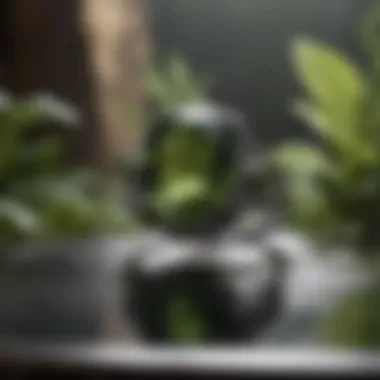
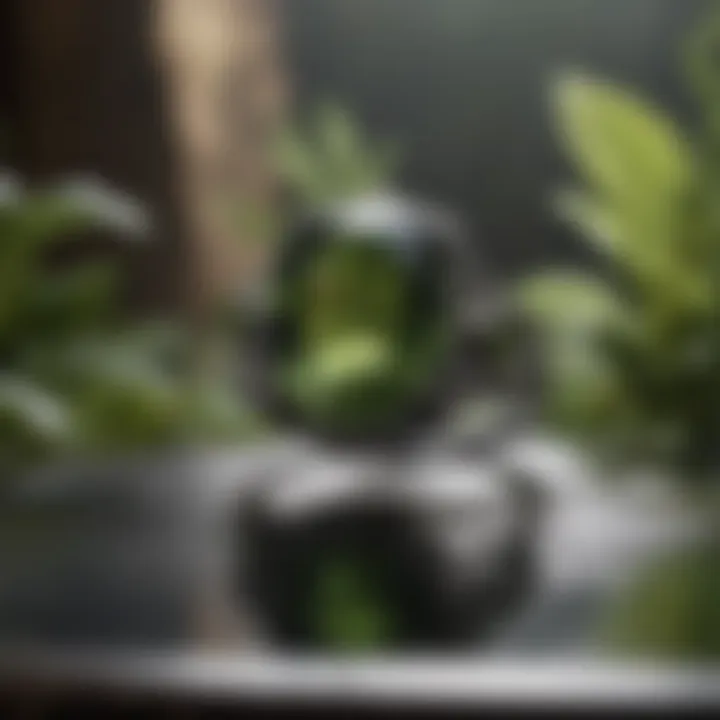
Market Trends and Value of Moldavite
Understanding the market trends and value of moldavite is crucial for collectors and enthusiasts who aim to invest wisely in this extraordinary gemstone. Moldavite has captured the imagination of many, not just for its unique formation and beauty but also for its perceived metaphysical properties. In the world of geology and collectibles, the significance of moldavite goes beyond surface aesthetics; its value fluctuates due to various market dynamics, which collectors should recognize to make informed decisions.
Current Market Prices
As of the latest updates, the market for high-quality moldavite has enjoyed a notable surge in interest. Prices can vary widely, ranging from around $30 for smaller pieces to upwards of several hundred dollars for larger, top-quality specimens. Several factors contribute to these price differences:
- Size: Larger pieces tend to command higher prices due to their rarity and visual impact, often making them sought after by serious collectors.
- Quality: Clear, well-formed, and uniquely colored specimens typically fetch more. These characteristics highlight the moldavite's captivating aesthetics and geological integrity.
- Market Demand: Increasing global interest in gemstones, especially those associated with spiritual practices, contributes to rising prices. Collectors often pay a premium for specimens perceived as scarce or unique.
Keeping an eye on auction results and retail prices can provide insights into price trends. Regularly checking platforms like eBay, specialized gem shops, or collecting forums serves as an invaluable tool. Popular platforms like Reddit and Facebook have vibrant communities dedicated to discussing recent sales and providing price alerts.
Factors Influencing Value
The value of moldavite is shaped by a tapestry of influences that every prospective buyer should consider. Here are some key factors:
- Origin: Moldavite's exclusive geographical source in the Czech Republic adds to its allure. Genuine pieces from this region are revered and often more valuable.
- Authenticity: As moldavite's popularity increases, so does the threat of counterfeit pieces. Buyers must be vigilant, ensuring they acquire authentic moldavite through reputable sellers.
- Market Trends: Economic fluctuations can impact the gemstone market as a whole. During prosperous times, collectors might splurge more on high-quality moldavite, while economic downturns could see declines in spending.
- Cultural Trends: Moldavite's connection to metaphysical practices adds a layer of appeal. As interest in spirituality grows, the demand for associated artifacts, like this unique stone, often follows suit.
"To understand the value of moldavite, one must not only look at its physical properties but also the shifting tides of public interest and market accessibility."
Navigating the complexities of moldavite pricing requires a thoughtful approach. Monitoring these trends allows collectors to time their purchases strategically, potentially maximizing their investment while enhancing their prized collections. Understanding these nuances helps ensure that each piece of moldavite is more than just a lovely stone; it's a valuable addition to a personal narrative of collecting.
Navigating Moldavite Purchases
Purchasing high-quality moldavite can be a bit of a maze, especially for those who are new to the collectible scene. Navigating through the options is not just about finding the lowest price or the prettiest stone; it’s about understanding the true essence of what makes moldavite special. When acquiring a piece of moldavite, it’s vital to focus on various elements that impact quality and authenticity. Along with ensuring you’re getting what you pay for, there are benefits to selecting reputable sources that make the purchasing process more trustworthy.
Identifying Trusted Retailers
When it comes to moldavite, choosing a reputable retailer is crucial in ensuring the authenticity of your purchase. There are a few markers to look out for:
- Reputation: Seek out shops or dealers that have solid reviews from past customers. Check websites like Reddit or Facebook groups dedicated to moldavite collecting, and listen for word-of-mouth about specific vendors.
- Certifications: Some retailers offer guarantees of authenticity, enhanced through third-party certification. This can be especially beneficial for higher-priced stones.
- Clear Information: Reliable retailers usually provide detailed descriptions of their products, including origin, quality characteristics, and sometimes even scientific background.
An important point to ponder here is that not all molds are created equal. Real moldavite can be mistaken for other types of glass, so scrutinizing the retailer’s claims can save you a hefty sum in the long run. Remember, trust your instincts and always think twice before making a purchase!
Online vs. Local Purchases
In today’s market, collectors have the luxury of choosing between online and local purchases. Each route comes with its set of advantages and challenges. Here’s a breakdown to consider:
Online Purchases
- Variety: Online stores often offer a wider array of choices, allowing you to explore different types and qualities without leaving your home.
- Convenience: Buying online saves time, and you can quickly compare different retailers without battling traffic.
- Research-Friendly: Online purchasing lets you delve into reviews and testimonials before making your decision.
However, online shopping does have its drawbacks.
- Quality Validation: Without physical inspection, gauging the quality of the product can be tough.
- Returns and Refunds: Depending on the retailer’s policies, returning a product can be more challenging.
Local Purchases
- Direct Inspection: Shopping locally allows you to physically handle the moldavite, making it easier to inspect texture, color, and clarity.
- Personal Connection: Engaging with local dealers can foster relationships that benefit future purchases, besides gaining insight from their expertise.
- Immediate Ownership: You can take your new piece home right away instead of waiting for shipping.
On the flip side, local options might limit your selection compared to the vast online marketplaces. Ultimately, whether to shop online or locally boils down to your preferences and, importantly, the unique experiences you’re after.
In the end, thorough research and careful consideration are your best allies in ensuring a satisfying moldavite acquisition experience.
Closure
Wrapping up our exploration, it's evident that understanding high-quality moldavite extends beyond mere aesthetics; it encompasses geological significance, collecting strategies, and market dynamics. This unique natural glass, formed from an ancient meteorite impact, captures the attention of collectors and enthusiasts alike—not just because of its stunning visual appeal, but also due to its rich history and transformative resonance in various cultures.
The Lasting Appeal of Moldavite
The enduring fascination with moldavite can be attributed to its otherworldly origins and distinct characteristics that make each piece seemingly one-of-a-kind. Unlike conventional gemstones, moldavite's formation through cosmic events imbues it with a story—one of cosmic collision and ancient Earth processes. Collectors often gravitate toward moldavite not merely for its beauty, but for the unique narrative that accompanies each specimen. The vibrant green hues, sometimes mottled with deeper shades, create a celestial connection impossible to find in more common stones.
Its mystical associations in metaphysical practices further enhance its appeal. Many believe that moldavite carries transformative properties, fostering spiritual growth and heightened awareness. As a result, aficionadas often seek out moldavite with personal significance, adding an emotional layer to their collecting experience.
Future Trends in Collecting Moldavite
Looking ahead, the landscape of moldavite collecting is undoubtedly evolving. As awareness regarding the geological and metaphysical aspects deepens, it stands to attract a broader audience. Collectors are becoming more educated about ethical sourcing, with an increasing number opting to purchase from reputable dealers who uphold transparent practices. This trend fosters a more conscientious collecting environment, promoting sustainability and responsible excavation methods.
In terms of market dynamics, there’s a notable interest in mint-condition, untouched moldavite. Because collectors are searching for the rarest and highest quality pieces, the demand may very well increase prices for prime specimens. As technological advancements enhance sorting and grading techniques, the quality assurance process will likely become more standardized, giving collectors clearer benchmarks.
Overall, as knowledge continues to flourish around moldavite, the future of collecting it presents exciting opportunities for enthusiasts. The combination of geological rarity, aesthetic charm, and spiritual significance ensures that moldavite will maintain its stature as a coveted item in the mineral and collectibles markets.



